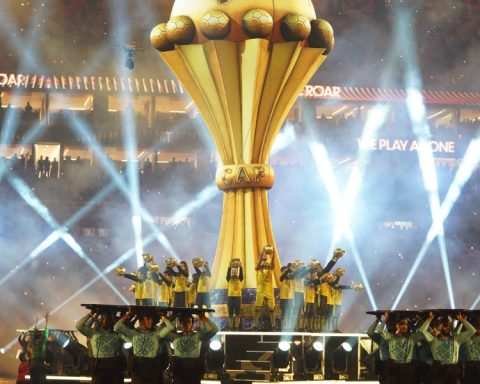Sports Writing (EFE).- The Big leagues They have insisted on reducing the duration of the games and their main bet for this has been the pitch clock that will begin to be applied this season of major baseball.
WHAT DOES THE PITCH CLOCK RULE ESTABLISH?
By using the pitch clock, pitchers have 15 seconds to throw a pitch, which will increase to 20 seconds when there are runners on the bases.
In the event that the pitcher exceeds this time limit, he will be penalized with a ball in favor of the batter.
The batters they will also have to adjust to the implementation of this rule that gives the offensive player a 30-second limit to come to the plate between at-bats.
The batter must also be ready to face the pitcher’s pitch before the clock strikes eight seconds, if he exceeds it he will be penalized with a ‘strike’ against him.
The first to be a victim of this provision in preseason games was Dominican third baseman Manny Machado, who on February 25 in the game between the San Diego Padres and the Seattle Mariners, when he was not ready to face left-handed Robbie Ray, as the clock hits eight seconds.
Machado was immediately penalized with a ‘strike’, although, in that turn he shot an undisputed.
To facilitate its application, each MLB stadium will have two watches located behind the batter’s box on each side of the umpire and two more positioned in the outfield, in addition to this, the umpires are equipped with a system in charge of informing them when the clock has expired.
FOR AND AGAINST THE CLOCK
Like any new rule in a sport like baseball, it has generated reactions for and against its application.
Stars like Zack Wheeler or Andrew McCutchen understand that the clock rule is very invasive and that it speeds up the game too much.
Others, like the case of relievers, who tend to pitch in situations where the game is on the line, consider the clock to be another element of pressure against them.
While Max Scherzer and Aaron Judge find the pitch clock gives them advantages they may not have had before.
Scherzer points out that the clock puts control of the game in the hands of the pitcher, while Judge understands that anything that speeds up the pitcher’s action is beneficial to hitters.
A situation in which the speed of the game that McCutchen pointed out and the control in the hands of the pitcher, as Scherzer said, was evident on March 2 in the game between the New York Yankees and the Pittsburgh Pirates, when the Wandy Peralta struck out Tucupita Marcano with three pitches in just 20 seconds.
Peralta took just 6.6 seconds per pitch, taking the game to a pace where Marcano couldn’t get comfortable in the batter’s box and “taken his breath away,” as McCutchen has felt with the speed of the game.
Although Peralta managed to come out on top in this matchup, it is not at all logical that he can consistently maintain this pitching rhythm, a factor that strengthens Judge’s theory, who understands that this clock will have pitchers on the limit, out of breath and will contribute because they make mistakes that can be taken advantage of by the batter.
Another element that might not be liked by the fans and that fully intervenes with the game, as expressed by Wheeler, is the possibility that a match could end due to the intervention of one of the actions established in this rule.
A scenario like that occurred in the preseason game on February 26, when Cal Conley, of the Atlanta Braves, came to the plate against the Boston Red Sox, with the game tied at six runs, two outs and three. runners on the bases, being struck out by the home plate umpire, after he was not ready to bat when the pitch clock reached eight seconds.
The game ended tied and there were no major consequences because it is a preparatory stage, but if this action is repeated in a regular series or postseason game, the reactions could be different.
THE RESULTS WILL SPEAK
The result of the implementation of this rule is what will determine its success or failure.
In the last Major League season, the games that concluded in the nine regulation innings had an average duration of 3 hours and 4 minutes.
So far this preseason under the pitch clock system, according to the latest MLB data, game lengths have decreased to 2 hours and 38 minutes.
This time implies that the matches have reduced their duration by 26 minutes, a result so far positive for MLB innovation. EFE


















